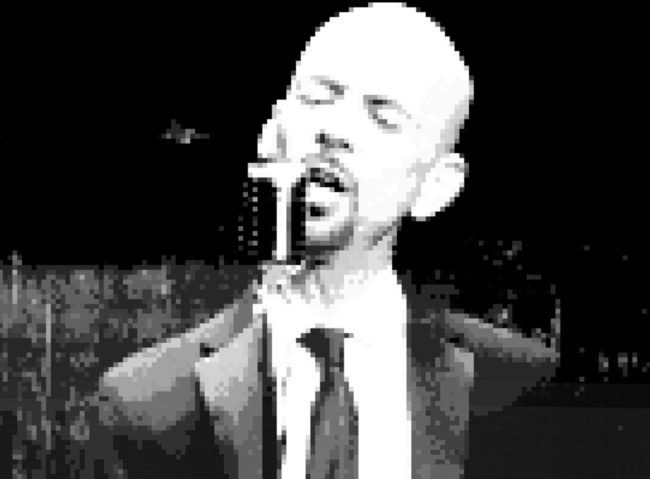
Every image on your screen is an assembly of tiny dots. If you’re looking at videos in high resolution, it can be easy to lose sight of this. You might forget that you’re staring at a crafty assembly of pixels – points of light that can be manipulated and rearranged by a skilled videographer. That’s the magic of filmmaking: the wondrous illusion created by the continuous image. But singer Bryan Lee and multi-instrumentalist Christopher Lee Simmonds of dark electronic pop group Snuttock know all about phantoms, digital and otherwise. They’re technological tricksters themselves, and their long history of creating alternate mixes demonstrates their understanding of rearrangement, manipulation, and juxtaposition. In the clip for the new and appropriately-titled Robot Mix of their 2020 single “Stay,” they’re showing us the pixels – and, remarkably, the more granular the images become, the more fascinating they get.
https://youtu.be/Mdsf6libGFM
The original version of “Stay” was a departure for Snuttock: a gleaming, heartfelt synthpop song reminiscent of the most romantic ’80s ballads. The mix highlighted the warmth of Lee’s voice and the sweetness of his harmonies, and Simmonds supported him with some of the most straightforward and hooky music in the band’s deep catalog. But no follower of Snuttock could have thought they’d leave it at that. Snuttock is accustomed to pushing their songs as far as they’ll go – and on the Robot Mix of “Stay,” they’ve taken their thoroughly pleasant pop song into a strange and processed future. The hooks are still present (and huge), and Lee’s vocal retains its inviting quality. Yet the groove is harder, the synths twinkle brighter, and the backing vocals feel simultaneously more ghostly and more seductive. Snuttock has demonstrated their mastery of the art of the mix, and, through the act of creative rearrangement, discovered secrets buried in their tracks.
To realize their vision for “Stay,” Snuttock and director Ernie Mosteller have enlisted the actress and model Alisa Baksheeva. In the smart, stylish, thought-provoking “Robot Mix” video, she’s positively otherworldly and quite possibly manufactured: she floats through these beautiful frames impassively, wearing a skin-tight red turtleneck dress that takes on a near-plastic quality. In one arresting sequence, she poses in front of a chain-link fence that’s in front of a giant chemical storage tank – everything and everyone seems android-like, futuristic, thoroughly hallucinatory. Baksheeva’s performance is amplified by video effects that call attention to the pixels in the frames, and, by extension, the artificial quality of this image and video images in general. Never are those pixels any larger than when Mosteller’s camera lingers on Lee, who dissolves into lines, right angles, and black and white squares as he’s singing.
